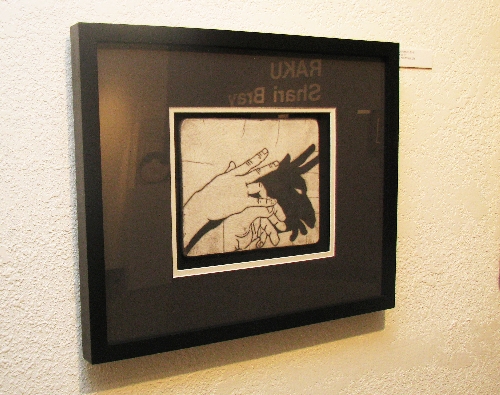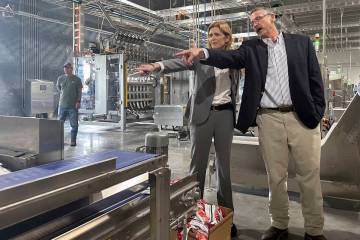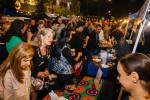Raku artist has a solo show at Spring Valley Library
Local artist Shari Bray studied ceramics and painting in college but didn't try to make a career of it for 30 years.
"Nobody was beating down my door to be an artist, so I took a job at the first place that would hire me, which was an insurance agency," Bray said.
When she moved to Las Vegas in the '90s, she met up with local ceramic artists and kept her hand in the art for nearly 20 years. In October 2008 she quit her job and decided it was time to pursue the dream.
Her solo show, "Figurative Works in Raku," is scheduled to be on display in the Spring Valley Library, 4280 S. Jones Blvd., through Feb. 12.
Raku is a Japanese firing technique developed in the 1500s for the tea ceremony. The ceramic work is fired to bisque, creating a solid piece of ceramic, but it's a rough and not completely watertight ceramic. Glaze is applied. The kiln is heated to between 1,600 and 1,850 degrees. The piece is removed red hot from the kiln and either air-cooled or immersed in water.
"In Japan they would use a wood-fire kiln, so there would be ash and other things that chemically affect the atmosphere in the kiln," Bray said.
The result would be a piece with shiny, often light-colored glaze contrasted with the unglazed portions, which become a rich, sooty, black color. Raku didn't really make a splash in the States until the '60s, but Americans tended to use gas kilns, which created a cleaner atmosphere in the kiln and didn't create the raku effect.
"As I understand it, the American raku technique was discovered by accident by Paul Soldner when a pot fell over on something that burned and he noticed it," Bray said. "Now we take the red-hot pots out of the kiln, put them into something that burns -- like sawdust, leaves or paper -- and after a few seconds cover it up. It smokes and smolders and the carbon impregnates any of the clay that doesn't have glaze on it."
In order to create her pieces, Bray has to paint the image in reverse, painting white glaze and leaving bare clay to become the black lines.
"It's kind of tricky," Bray said between laughs. "Raku is probably a good medium for a masochist, because there's just so many things that can go wrong. The pieces are brought to temperature extraordinarily quickly. I bring it up to 1,800 degrees in about half an hour. When I take the red-hot pieces out, often I'm quenching them in water in under 15 minutes. Some of the pieces are lost to thermal shock."
Bray has learned to minimize that problem, but she added that the number of variables that are out of the artist's hand are enormous.
"Your glaze could be affected by the amount of humidity in the air or whatever you're burning it in," Bray said. "The one thing I tell people is that you don't fall in love with a raku piece until it's done and cleaned up. There are just too many things that could go wrong."
Contact Sunrise/Whitney View reporter F. Andrew Taylor at ataylor@viewnews.com or 380-4532.
If You Go
"Figurative Works in Raku," is scheduled to be on display in the Spring Valley Library, 4280 S. Jones Blvd., through Feb. 12. Gallery hours are 10 a.m. to 7 p.m. Monday through Thursday and 10 a.m. to 6 p.m. Friday through Sunday. For more information, visit lvccld.org or call 507-3820.






















